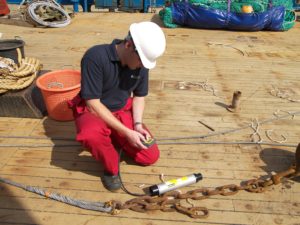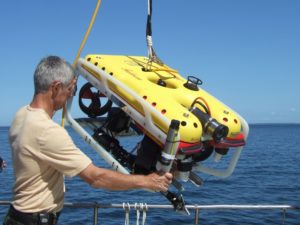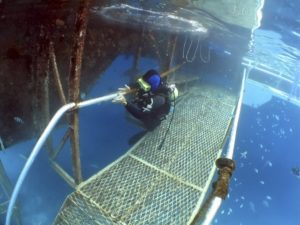How To Maximise Performance With Positioning Beacons

Subsea acoustic positioning beacons are a key part of an underwater positioning system in conjunction with the surface tracking system. A beacon is a versatile tool, used across a range of underwater applications to accurately locate assets and equipment. Available in a variety of sizes and ratings, they enable the USBL positioning tracking of targets from shallow water operations up to 4000m deep.
applied acoustics’ range of beacons are optimised for different environments, including shallow-water tracking. The 1320 series of beacons are perfect for divers and small ROV’s, providing vital positioning information for the ship’s crew who need to constantly monitor the position of divers for health and safety reasons.

The workhorse of the beacon range is the Mini beacon, models 1119 or 1113H. These are used for a variety of different tasks, from workclass ROV/ AUV tracking and subsea asset marking to sidescan sonar towfish tracking and fish aquaculture operations.
But what good is a positioning beacon if you can’t use it to its full potential? Here, we take a look at how you can maximise the versatility and performance of your positioning beacon.
A sense of direction
There are a wide range of acoustic positioning beacons available, catering to a number of different applications.
Positioning beacons can be split into two general types: omni-directional and directional. A directional beacon’s transducer has a focused beam pattern where the acoustic energy is radiated in a narrow angle. This increases the operating range and noise immunity. This type is typically recommended for sidescan towfish or long range tracking applications.
Omni-directional beacons are used when operating around a vessel in multiple directions at shorter ranges, as the beam pattern for an omni-directional beacon is the full hemisphere.

Bigger isn’t always better
The larger the beacon, generally the more power or battery life, sometimes both. In the medium-frequency operating bandwidth, a positioning beacon’s transmit power level is generally related to the maximum operational range, so the higher the transmit power the further the acoustic beacon will be able to track.
However, when operating at shorter ranges in shallow water, a smaller, low-power beacon is more suitable. In such cases, a higher-powered beacon can result in tracking geometry misalignment and saturate receivers on the tracking equipment, resulting in unstable positioning.
If deploying a beacon for a long period of time, as you would when marking a subsea asset, a beacon with a longer listening and operational life may be your best bet. A beacon designed for long-term deployments, such as the 1159, has three separate battery packs, ensuring the beacon will not drop out for the length of the project.
Fine tuning
We are often asked about the best channel to use on a beacon. This depends on a number of things, but for our more advanced systems that are capable of Sigma 2, we always recommend setting up your positioning beacons for use on these channels.
Sigma 2 is aae’s latest development of digital spread spectrum acoustic protocol. Sigma 2 channels are wide band, spread across a frequency range, delivering precise, reliable and stable positioning. For quick configuration, applied acoustics offer Sigma 2 quickset channels on all current versions of our beacons.

Added extras
All applied acoustics beacons can be fitted with depth sensors to aid or provide a precise depth reference for positioning. A depth beacon operates by appending the pressure reading from the integrated sensor to the transmitted acoustic position message. The surface transceiver receives the positioning message and depth data; this information is then used to calculate the beacon’s position. There are a range of depth sensor rating options available, ranging from 100m to 4000m.
Installation
Your acoustic positioning beacon should be installed securely and protected from impact on the subsea asset. Our larger beacons are fitted with a protection cage and sleeve to minimise physical damage.
The beacon should also be positioned with a clear, unobstructed line-of-site view to the USBL tracking system so that the beam patterns align. Our omni-directional beacons are able to work at ±90° from the centre point of the transducer, so the transducer should be clear of any obstacles for tracking reliability.
All of our transponder beacons come with different mounting options. Remote transducers are also available, allowing for the electronics bottle to be located away from the main transducer when space is tight.
Be kind to your beacon
Regular maintenance will ensure optimal performance of your acoustic positioning beacon. Before deploying a beacon, the battery pack should be fully charged and the PRV vented to ensure there is no build-up of gases internally. Once the beacon is recovered, it should be rinsed in fresh water to remove any mud, silt and salt deposits.
Beacons should be checked regularly for damage, particularly around the transducer and electrical connector as any damage will affect performance. A PRV service should be carried out annually to ensure safe operation.
modulus technology offers training courses and advice on all aspects of beacon maintenance, so please don’t hesitate to get in touch for more information. Alternatively, feel free to browse our full range of positioning beacons online, or speak to our sales team about your requirements in more detail.



